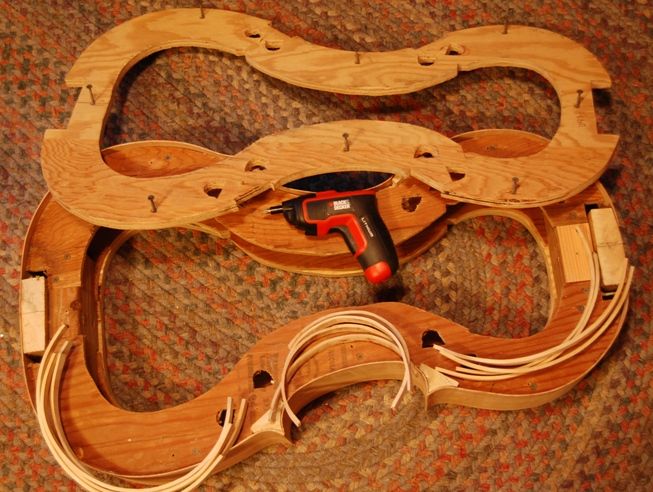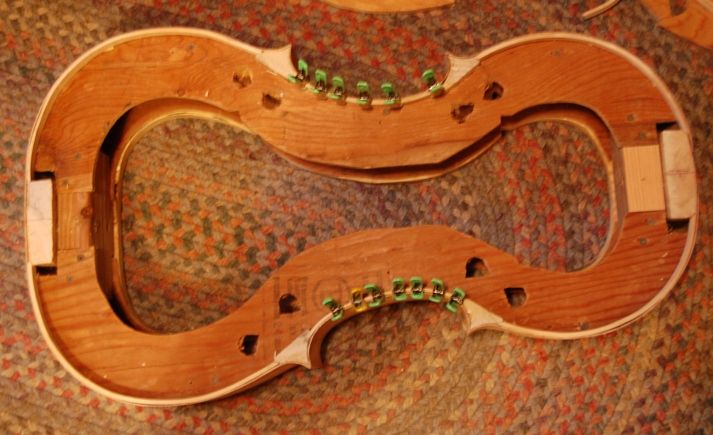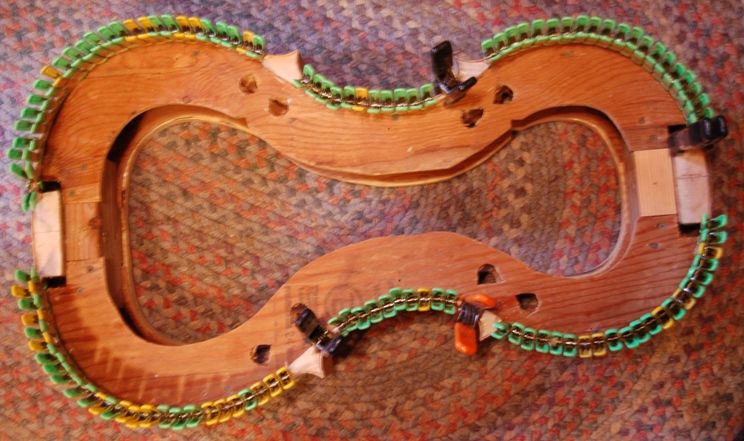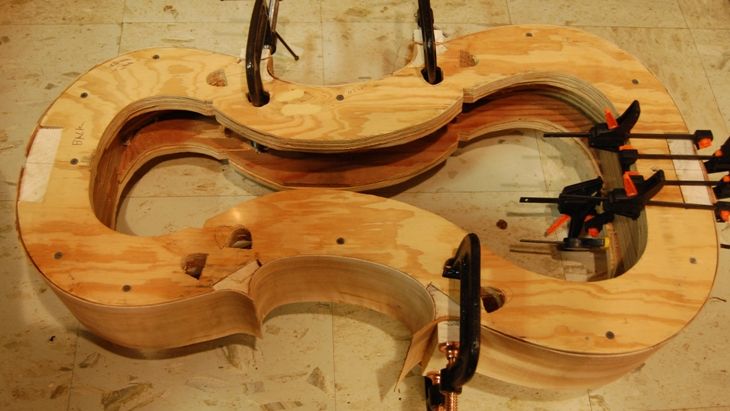Willow cello linings installed, glued and clamped.
Purpose of the collapsible cello mold:
My cello mold is built with a front and back “spacer”, each of which is removable to allow installation of linings. Each is held in place by a few drywall screws. I got tired of the repetitive motion of turning the screws by hand, and bought a very cheap electric screwdriver, barely sufficient for the task. I will later make a special attachment for it so that it can turn the tuning machines on double basses…that’s another task that wears out my wrists. Anyway– in less than two minutes I removed the front spacer, and the cello looked like this:

Dry-fitting the linings:
Then I cut the mortises into the blocks, fitted the linings (that I had bent earlier) into their respective places, and prepared for gluing. So, with the linings dry-fitted and ready for gluing, it looked like this (notice that only the center linings have clamps at this point; that is because they want to relax away from the rib, while the upper and lower linings straighten and tighten against the rib):

You can see the importance of the linings, by comparing the two photos above: without the linings, the ribs are only about 1.5mm thick…not very strong, nor is there sufficient gluing surface on that thin edge. So, with the linings in place the edge is about 5.5mm thick, which significantly strengthens the edge, and more than triples the gluing surface.
Hot Hide Glue and lots of clamps!
Once all the linings fit correctly, I heated up my glue, prepared a container of hot water, and my various brushes and palette knife, and, one by one, I brushed on the hot hide glue and clamped each lining in place. Those little spring clamps work pretty well. I got them from Home Depot, and they have served this purpose to my satisfaction. Occasionally there is a reluctant joint that needs more pressure, in which case I use a larger clamp, or one of those little f-clamps. (You can never have too many clamps!) After gluing and clamping, the cello looks like this:

Once these linings dry, I will remove the clamps and repeat the process on the back side. the back has a slight taper, from tail to neck. At the bottom block, the ribs are about 113mm tall. At the neck they are about 108mm tall. So I will want to plane the ribs to those approximate dimensions before I install the linings. One thing you can’t see in the photos is the fact that I fit the linings just a little high…slightly “proud” above the rib edge. I want to make sure that whatever planing needs to be done is primarily removing willow, not curly maple. I will accomplish final leveling with a sanding board, however, just before tracing the shape of the plates, from the shape of the completed rib garland.

 Follow
Follow

